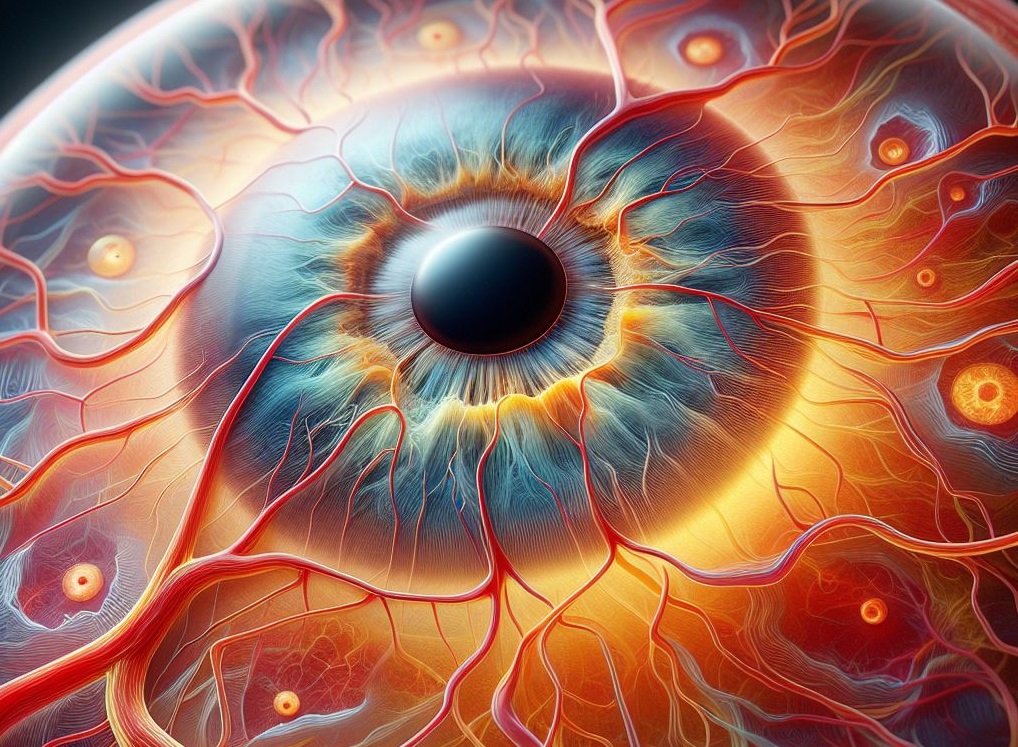Researchers have found how a vitamin A derivative produces the specialised cells that give humans the capacity to see millions of colours a sense that dogs, cats, and other mammals do not have, using human retinas cultured in laboratory dishes.
These retinal organoids allowed for the first time to study this very human-specific trait.
It’s a huge question about what makes us human, what makes us different.
Robert Johnston, an associate professor of biology at Johns Hopkins University.
The results of the study were published in the journal PLOS Biology. the findings include an increased understanding of colour blindness, vision loss due to age, and other photoreceptor-linked diseases. They also show how genes, which scientists previously believed to be regulated by thyroid hormones, direct the human retina to produce certain colour-sensing cells.
The study team discovered that retinoic acid, a chemical generated from vitamin A, controls whether a cone would specialise in perceiving red or green light by adjusting the biological characteristics of the organoids. The red sensor is only developed in humans and closely related primates.
For many years, scientists believed that red cones were created by a coin flip method in which cells randomly chose to detect green or red wavelengths. However, a new study from Johnston’s group suggested that thyroid hormone levels may be involved in this process. Rather, the new research indicates that retinoic acid in the eye orchestrates a particular series of processes that lead to the appearance of red cones.
The researchers discovered a correlation between increased ratios of green cones and high retinoic acid levels during the early stages of organoid development. In a similar vein, low acid levels altered the genetic instructions of the retina, causing red cones to form later in development.
There still might be some randomness to it, but our big finding is that you make retinoic acid early in development.
This timing really matters for learning and understanding how these cone cells are made.
Robert Johnston
Also Read| Researchers Discovered That Love Leaves a Mark On The Brain
The only difference between red and green cone cells is a protein called opsin, which senses light and informs the brain of the colours that an individual perceives. While the genes of each sensor stay 96% the same, different opsins control whether a cone becomes a green or red sensor. The researchers observed changes in cone ratio over a 200-day period using a novel method that identified those minute genetic variations in the organoids.
Because we can control in organoids the population of green and red cells, we can kind of push the pool to be more green or more red.
That has implications for figuring out exactly how retinoic acid is acting on genes.
Sarah Hadyniak
In the retinas of 700 people, the researchers also charted the very variable ratios of these cells. One of the most unexpected results of the new research, according to Hadyniak It was seeing how the proportions of the green and red cones altered in individuals.
How the ratio of green to red cones may fluctuate so much without impairing vision is still a mystery to scientists. According to Johnston, if these cells were used to measure the length of a human arm, the various ratios would result in “amazingly different” arm lengths.
The researchers are collaborating with other Johns Hopkins laboratories to increase knowledge of disorders such as macular degeneration, which results in the loss of light-sensing cells in the centre of the retina. The goal is to enhance their comprehension of the connections between cones and other cells and the nervous system.
Also Read| Researchers Developed a Transparent Brain Implant That Can Monitor Surface-Based Neural Activity
The future hope is to help people with these vision problems.
It’s going to be a little while before that happens, but just knowing that we can make these different cell types is very, very promising.
Robert Johnston
Source: Johns Hopkins University Hub
Journal Reference: Hadyniak, Sarah E., et al. “Retinoic acid signaling regulates spatiotemporal specification of human green and red cones.” Plos Biology 22.1 (2024): e3002464. DOI: doi.org/10.1371/journal.pbio.3002464.
Last Update







